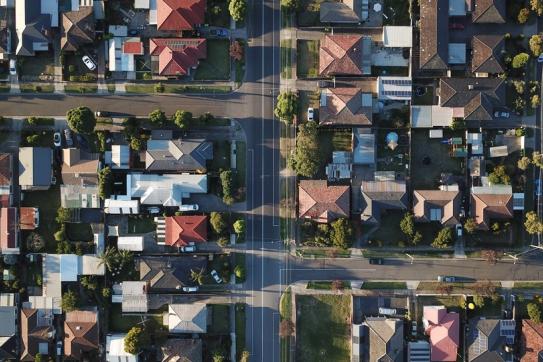Drawing on lessons learned from the Great Recession, Professor Tomasz Piskorski demonstrates in his research that debt relief to households should be an essential part of the US government’s response to the economic calamity caused by the COVID-19 crisis.
Piskorski, the Edward S. Gordon Professor of Real Estate, writes in Barron’s this week that as many as 30 percent of all borrowers could default on their mortgage payments, causing a ripple effect in the economy that results in a severe downturn in the housing market and broader economy.
“The US economy is going to take months to recover, and if we don’t provide struggling households debt relief, we might end up repeating some of the mistakes of the Great Recession,” Piskorski says. “During the last recession, some households received relief, but it took a long time to work out the details, and it was not implemented as effectively.”
Piskorski’s research, co-authored with Amit Seru of the Stanford Graduate School of Business, demonstrated that regions of the US that did not receive effective debt relief took more years to recover in terms of consumer spending, employment, and housing prices.
The recently passed $2.2 trillion CARES Act contains forbearance provisions for people with federally backed mortgages, but Piskorski argues the law does not go far enough.
“Essentially, the Act mandates that all borrowers with government-backed mortgages—about two-thirds of all mortgages—be allowed to delay at least 90 days of monthly payments and possibly up to a year’s worth. This effectively allows you to stop making mortgage payments for a time. While it’s an important first step that buys us some time, the limitation of this approach is that it is a suspension, not forgiveness,” Piskorski explains.
For example, if a household misses five mortgage payments they would still need to pay that amount when the crisis is over, which could prove difficult if unemployment figures stay high.
“A better approach would be to forgive interest payments on the debt for few months,” suggests Piskorski. “If you borrowed $200,000 to buy your home, you still owe that amount. Essentially, it would be the equivalent to giving you up to six months of free rent in an apartment or house.”
Piskorski says that such a plan would not be available to every US mortgage borrower, but could be targeted toward those who have lost jobs or can document financial hardship.
Piskorski also fears the CARES Act may be repeating a mistake made by the Obama administration in 2009, by relying too much on lenders and mortgage servicers to restructure household debt.
“We should not rely too much on the private sector as middleman,” he says. Piskorski and Seru’s research shows that there were significant barriers hampering effective debt relief by financial sector during the Great Recession. “Since many of these frictions are based on business models of these intermediaries, they cannot be removed quickly. Moreover, because the private sector does not internalize the social benefits from debt relief — it is rather more focused on returns for its investors — the extent of relief would not be of the desired scale,” he says.
“Debt relief policy should be simple and straightforward,” Piskorski says. “If we implement an effective federal mortgage debt relief program now and avoid costly foreclosures, there would be positive implications for financial stability and the broader economy, and it is a policy we could revisit, if the economy improves.”
